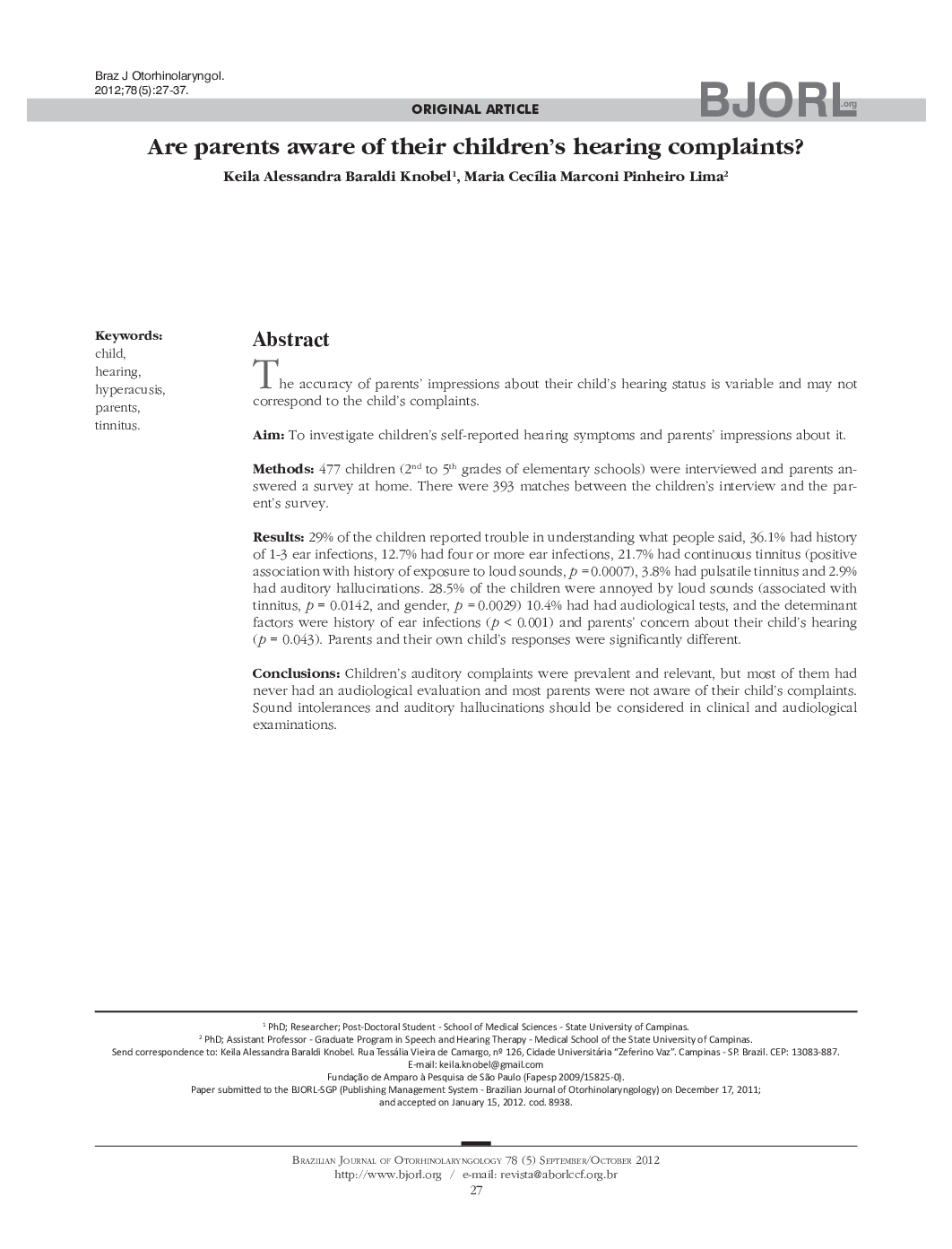| Article ID | Journal | Published Year | Pages | File Type |
|---|---|---|---|---|
| 4106785 | Brazilian Journal of Otorhinolaryngology | 2012 | 11 Pages |
The accuracy of parents' impressions about their child's hearing status is variable and may not correspond to the child's complaints.AimTo investigate children's self-reported hearing symptoms and parents' impressions about it.Methods477 children (2nd to 5th grades of elementary schools) were interviewed and parents answered a survey at home. There were 393 matches between the children's interview and the parent's survey.Results29% of the children reported trouble in understanding what people said, 36.1% had history of 1-3 ear infections, 12.7% had four or more ear infections, 21.7% had continuous tinnitus (positive association with history of exposure to loud sounds, p = 0.0007), 3.8% had pulsatile tinnitus and 2.9% had auditory hallucinations. 28.5% of the children were annoyed by loud sounds (associated with tinnitus, p = 0.0142, and gender, p = 0.0029) 10.4% had had audiological tests, and the determinant factors were history of ear infections (p < 0.001) and parents' concern about their child's hearing (p = 0.043). Parents and their own child's responses were significantly different.ConclusionsChildren's auditory complaints were prevalent and relevant, but most of them had never had an audiological evaluation and most parents were not aware of their child's complaints. Sound intolerances and auditory hallucinations should be considered in clinical and audiological examinations.
